... neuere Einträge
Freitag, 13. Mai 2011
Freitag, 13. Mai 2011
Day 66- 71: Stopover in Beijing
After 65 days I needed a short break. Instantly being on the road, sand everywhere, nothing else but meet on a stick, bread and oily rice...tired of being an alien.
I am just now in Beijing taking some days off, working on my material, writing for my project and trying to cope with all those pictures stuffed in my head from the last months.
Coming to Beijing feels like coming home, now even more as I am staying in a small appartment located in a typical Chinese compound. Not having to pack and unpack my bag everyday, just taking all things out, putting them into the cupboard. Going to the office everyday, taking the bus or the subway - being a commuter just like everyone else.
But don't worry, the journey will continue. Some people might have noticed that a second place is mentioned in the title right after Moscow - Qingzhou. Yet another place which many Chinese have never heard about. I will go to Qingzhou next tuesday, stay there a couple of days, come back to Beijing and leave again for the last two stations of my travel - Luoyang and Xi'an.
I will keep you posted...
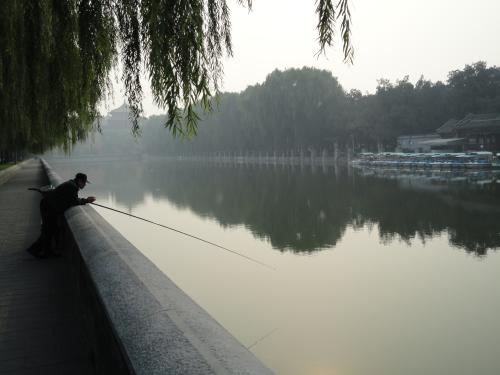
Back in Beijing
I am just now in Beijing taking some days off, working on my material, writing for my project and trying to cope with all those pictures stuffed in my head from the last months.
Coming to Beijing feels like coming home, now even more as I am staying in a small appartment located in a typical Chinese compound. Not having to pack and unpack my bag everyday, just taking all things out, putting them into the cupboard. Going to the office everyday, taking the bus or the subway - being a commuter just like everyone else.
But don't worry, the journey will continue. Some people might have noticed that a second place is mentioned in the title right after Moscow - Qingzhou. Yet another place which many Chinese have never heard about. I will go to Qingzhou next tuesday, stay there a couple of days, come back to Beijing and leave again for the last two stations of my travel - Luoyang and Xi'an.
I will keep you posted...

Back in Beijing
Link
(0 Kommentare)
Kommentieren
Freitag, 13. Mai 2011
Day 64-65: China - Lanzhou
We are taking the train again, this time only about 3 hours to the capital of Gansu Province - Lanzhou. I have been in this city several times, and I am really sorry to say this, but I HATE THIS CITY! It is dirty, crowded, loud and NOT pretty! It is famous for its noodle soup with beef. I am sorry again, but I have had better noodle soup in other places of China. Last time I arrived in this city by train from Lhasa, my ears felt like they would explode any minute. This time I was surprised by a huge construction site, muggy weather, sitting in a heated taxi, stuck in the traffic, sweating, well...it's Lanzhou!
Why do I go to this city? Well, it has to offer one of the best museums I have seen in China. Everyone who ever makes it to this place, DON'T EVER SKIP THIS PLACE! It's worth going...Some of China's most famous archaeological finds can be seen in this museum, besides they have real coffee, freshly brewed for only 10 Kuai (about 1 Euro). Yippi!
Here are some of my favourite exhibits:
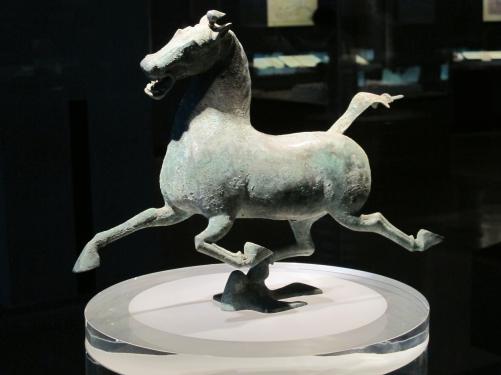
This time the real one...may I introduce to you - the celestial aka the flying aka the galloping bronze horse from Wuwei!
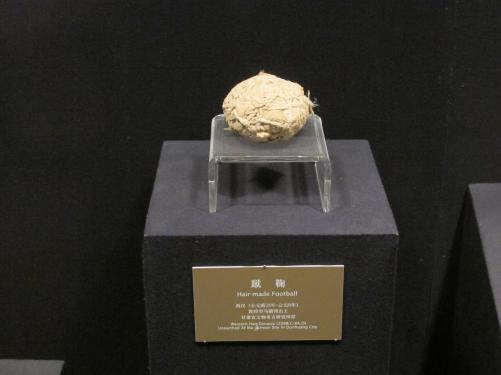
A hair-made football dating from Western Han dynasty (206 BC - 9 AD)
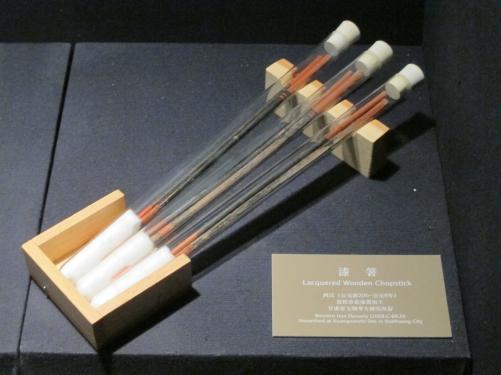
More than 2000 years old lacquered wooden chopsticks
You think this is old? Well, wait...
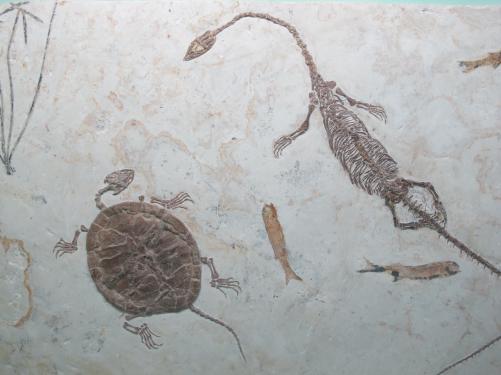
Fossil dating back about 145 million years ago
Not impressed? Well...
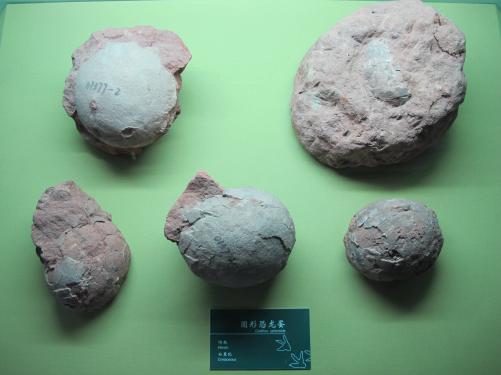
And...what's for breakfast?...how about a dinosaur egg?
Why do I go to this city? Well, it has to offer one of the best museums I have seen in China. Everyone who ever makes it to this place, DON'T EVER SKIP THIS PLACE! It's worth going...Some of China's most famous archaeological finds can be seen in this museum, besides they have real coffee, freshly brewed for only 10 Kuai (about 1 Euro). Yippi!
Here are some of my favourite exhibits:

This time the real one...may I introduce to you - the celestial aka the flying aka the galloping bronze horse from Wuwei!

A hair-made football dating from Western Han dynasty (206 BC - 9 AD)

More than 2000 years old lacquered wooden chopsticks
You think this is old? Well, wait...

Fossil dating back about 145 million years ago
Not impressed? Well...

And...what's for breakfast?...how about a dinosaur egg?
Link
(0 Kommentare)
Kommentieren
Freitag, 13. Mai 2011
Day 62-63: China - Wuwei or the quest of the flying horse
The ride from Jiuquan to Wuwei took about 5 hours. The only tickets available were those in a hard-seater cabin, no working air-condition, just old fans under the ceiling, unfortunately not rotating anymore. I already got used to the staring of people at me, the children being afraid and trying to escape from the strange looking tall person with evil-looking barbarian from the western regions. Well, once you sit down and try to start a conversation, the atmosphere usually gets quite relaxed and people want to know more about you.
Whenever I enter a hotel in these remote areas, I am very often rejected. The people behind the reception desk ususally feel a little embarrassed about this, having to tell me that foreigners are not allowed in their hotel. However, rule is rule, so I don't have another chance but to leave and find something else. Sometimes it is easier though when somebody Chinese accompanies you - places which seem to be closed for foreigners all in a sudden become accessible. So I was very happy about the company of my Chinese colleague for a couple of days.
People are sometimes astonished when I tell them about the places I am going to. What do you want to do in Wuwei? Nobody comes here...there is a museum? Really? I never went there...Well, strange foreigners!
Wuwei, known as Liangzhou in history, had been an important place in China for a long time. People started settling in this region about 5000 years ago. In 121 BC the Han emperor Wudi brought his cavalry to Wuwei, the eastern terminus of the Hexi Corridor, to defend his empire against the northern barbarians. He managed to expand the corridor westwards. When the city developed into one of the important crossroads on the Silk Road, more and more people came for settling in this area – people from all over Central Asia brought their culture and ideas to China.
Taking all this into consideration, it comes as no surprise that this city also has a museum...and I had planned to visit it. One of the most important archaeological finds all over China is the bronze figure of a galloping horse, sometimes also called the flying or celestial horse and now the logo for China tourism. This figure was excavated from a Han dynasty tomb in the city of Wuwei. Many other exmples of horses were found here, all of them giving eveidence for the fondness of emperor Wudi for horses, expecially those from the Ferghana Valley. [For all those who are interested in some more information on emperor Wudi of Han dynasty, the first envoy to Central Asia and the blood-sweating horses from Ferghane, you can check out this short text: http://www.silk-road.com/artl/wuti.shtml]
Most of the archaeological finds are now housed in the provincial museum in Lanzhou, but still some of them can be seen in the city museum of Wuwei, located in the local Confucius temple.
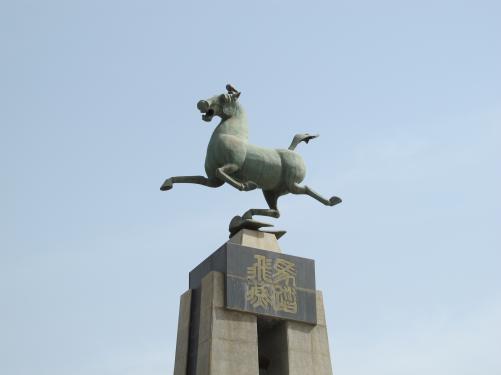
Flying horses all over the city
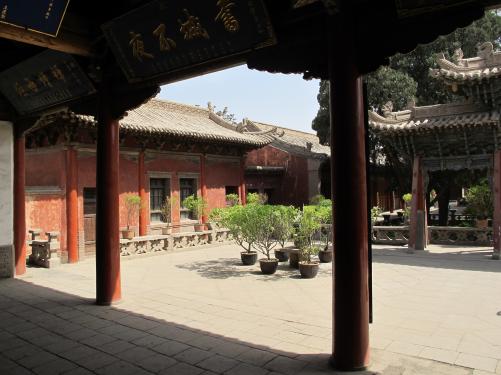
Inside the Confucius temple of Wuwei
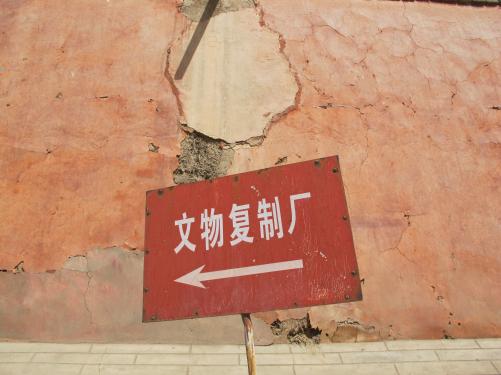
"Workshop for copying ancient cultural relics"
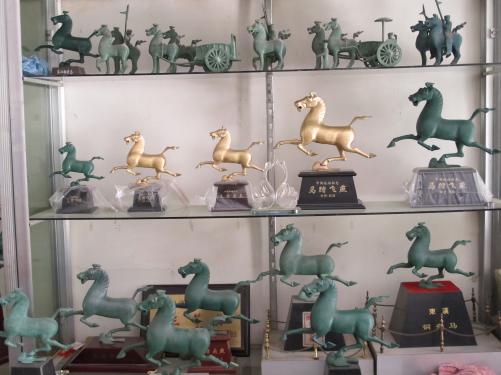
Celestial horses for everyone...
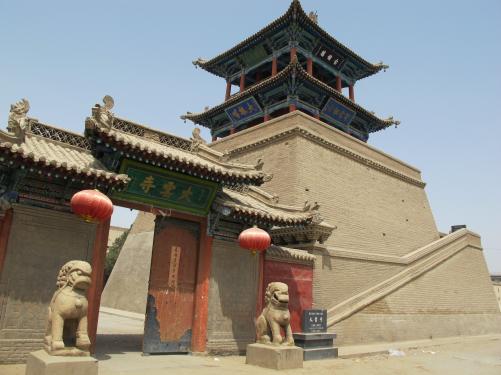
Dayun Si - Temple of the Great Cloud
Whenever I enter a hotel in these remote areas, I am very often rejected. The people behind the reception desk ususally feel a little embarrassed about this, having to tell me that foreigners are not allowed in their hotel. However, rule is rule, so I don't have another chance but to leave and find something else. Sometimes it is easier though when somebody Chinese accompanies you - places which seem to be closed for foreigners all in a sudden become accessible. So I was very happy about the company of my Chinese colleague for a couple of days.
People are sometimes astonished when I tell them about the places I am going to. What do you want to do in Wuwei? Nobody comes here...there is a museum? Really? I never went there...Well, strange foreigners!
Wuwei, known as Liangzhou in history, had been an important place in China for a long time. People started settling in this region about 5000 years ago. In 121 BC the Han emperor Wudi brought his cavalry to Wuwei, the eastern terminus of the Hexi Corridor, to defend his empire against the northern barbarians. He managed to expand the corridor westwards. When the city developed into one of the important crossroads on the Silk Road, more and more people came for settling in this area – people from all over Central Asia brought their culture and ideas to China.
Taking all this into consideration, it comes as no surprise that this city also has a museum...and I had planned to visit it. One of the most important archaeological finds all over China is the bronze figure of a galloping horse, sometimes also called the flying or celestial horse and now the logo for China tourism. This figure was excavated from a Han dynasty tomb in the city of Wuwei. Many other exmples of horses were found here, all of them giving eveidence for the fondness of emperor Wudi for horses, expecially those from the Ferghana Valley. [For all those who are interested in some more information on emperor Wudi of Han dynasty, the first envoy to Central Asia and the blood-sweating horses from Ferghane, you can check out this short text: http://www.silk-road.com/artl/wuti.shtml]
Most of the archaeological finds are now housed in the provincial museum in Lanzhou, but still some of them can be seen in the city museum of Wuwei, located in the local Confucius temple.

Flying horses all over the city

Inside the Confucius temple of Wuwei

"Workshop for copying ancient cultural relics"

Celestial horses for everyone...

Dayun Si - Temple of the Great Cloud
Link
(0 Kommentare)
Kommentieren
Donnerstag, 5. Mai 2011
Donnerstag, 5. Mai 2011
Day 61: China - Jiuquan and Jiayuguan
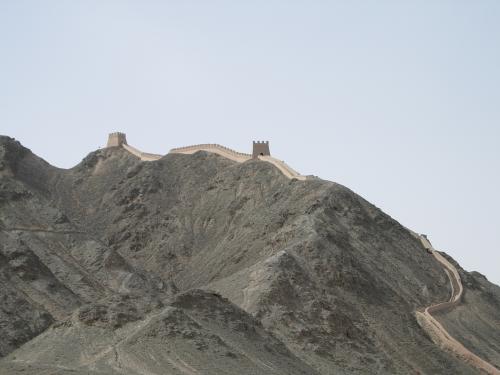
The western end of the Great Wall
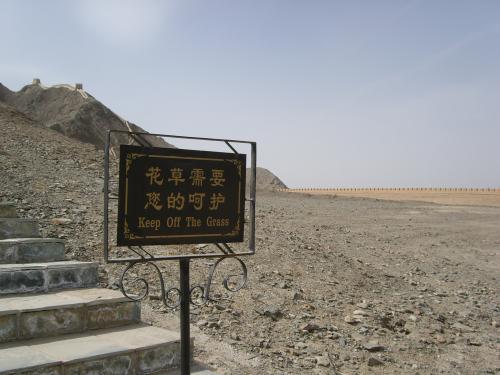
Lush meadows of Jiayuguan...
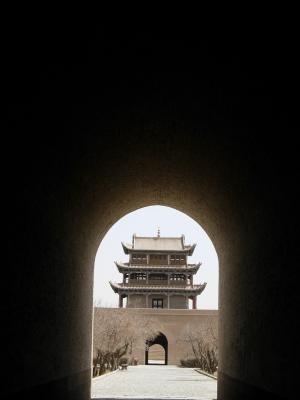
Jiayuguan...
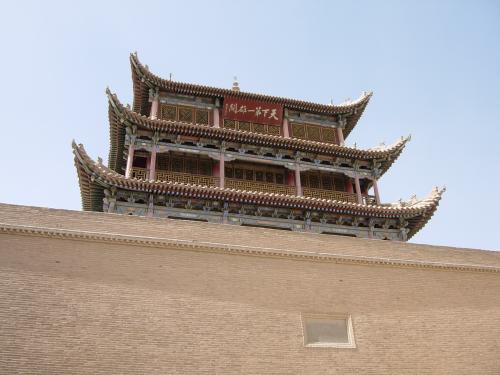
...the first pass at the western end of the Great Wall of China
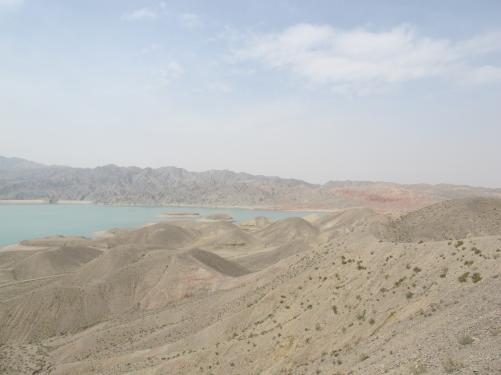
Brown - dominating color of the Hexi Corridor
Donnerstag, 5. Mai 2011
Day 59/60: China - Dunhuang
Dunhuang...
...1000 Buddha Caves (Mogao Grottoes)
...Sir Aurel Stein and the hidden manuscripts of cave no 17 - explorer or thief?
...The best noodles with donkey-meat in China
...Soaring sands on the edge of a high rising dune
...Sand, sand, sand......and.....sand
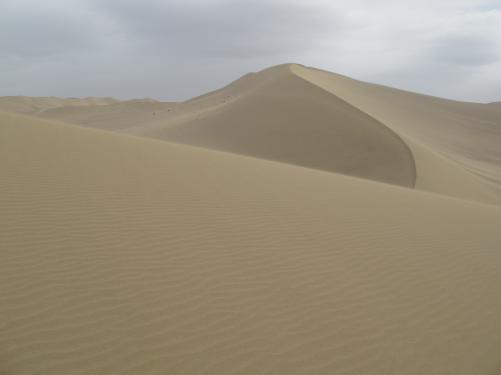
The Echoing Sand Dunes 鸣沙山
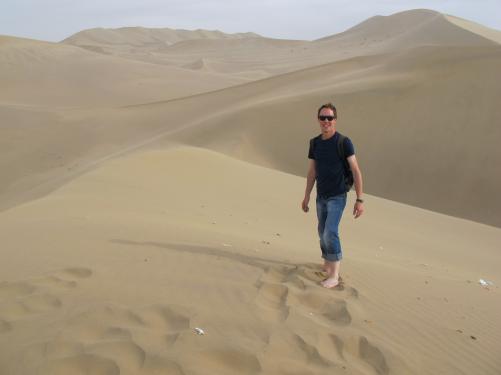
Nothing but sand
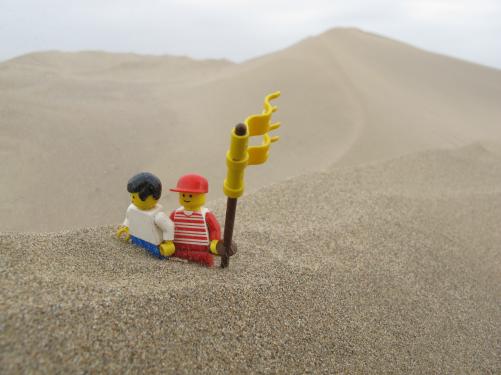
This land is ours...
...1000 Buddha Caves (Mogao Grottoes)
...Sir Aurel Stein and the hidden manuscripts of cave no 17 - explorer or thief?
...The best noodles with donkey-meat in China
...Soaring sands on the edge of a high rising dune
...Sand, sand, sand......and.....sand

The Echoing Sand Dunes 鸣沙山

Nothing but sand

This land is ours...
Link
(0 Kommentare)
Kommentieren
Dienstag, 3. Mai 2011
Dienstag, 3. Mai 2011
Day 58: China: Korla – Sand in the Shoes
After a short breakfast we are driving to the Iron Gate Pass 铁门关, once an important post on the Silk Road which had to be passed by the caravans to continue further to the east or the west. What had been a narrow canyon for a long time, is now turned into a water reservoir supplying the whole area with electricity. Small boats take you on a ride over the historical site and a guide gives you some background information. After the boat trip you can climb on a close-by mountain offering you a beautiful view over the landscape. As it was a national holiday today, the roads were quite packed with people, all hoping for a relaxing day in the nature.
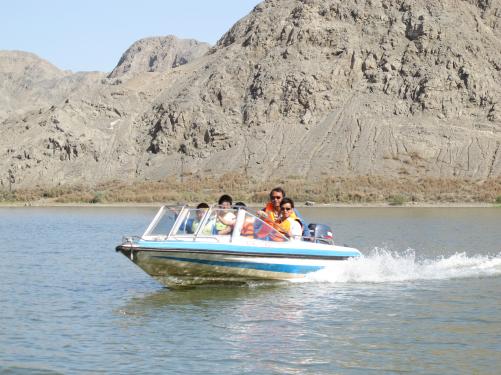
Tiemen Post water reservoir
The next stop brought us right into the Taklamakan desert, an area which is believed to have once been settled by the Lop People. The scenery looks like on a film-set, trees and a small lake right in the middle of the soaring sand-dunes. Some of the visitors take a camel ride through, others decide for the flight in a paraglider. We take off our shoes and hike up the dunes to get a glance of the surrounding sands. The sand feels really hot at the beginning, but becomes quite comfortable once getting used to the temperature. While I am walking up the sand-hill, I somehow feel like in my kindergarten-time, wanting to build a large sand-castle…probably the largest one in this world.
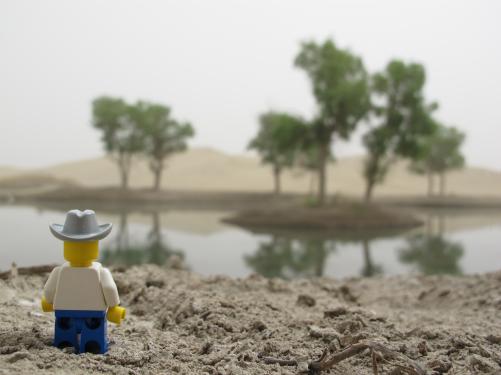
Settlement area of the ancient Lop people
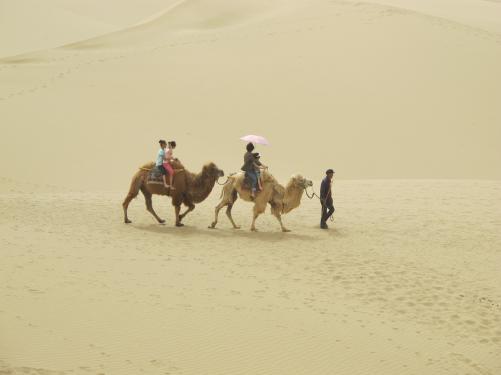
Camel-trek in the Taklamakan Desert
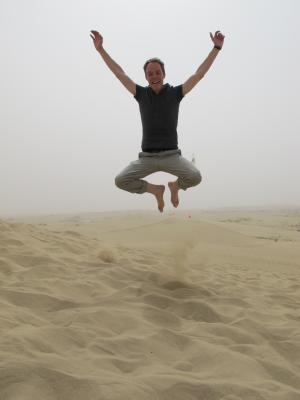
Sandbox for grown-ups
On the way back to Korla, we make a last stop at the Luobuzhuoer-Museum, dedicated to the history of the region. An archaeological highlight of the area was the find of the Yingpan-Cemetery. Already Sven Hedin was here at the beginning of the 20th century. I am struck by the sight of the mummy of a young child which passed away at the age of about four or five years. It is lying there, seeming to wake up from its long-lasting sleep any second…
Despite the heat, we end our day in a restaurant close to the hotel – we are having a steaming Chinese hot-pot with fish…

Tiemen Post water reservoir
The next stop brought us right into the Taklamakan desert, an area which is believed to have once been settled by the Lop People. The scenery looks like on a film-set, trees and a small lake right in the middle of the soaring sand-dunes. Some of the visitors take a camel ride through, others decide for the flight in a paraglider. We take off our shoes and hike up the dunes to get a glance of the surrounding sands. The sand feels really hot at the beginning, but becomes quite comfortable once getting used to the temperature. While I am walking up the sand-hill, I somehow feel like in my kindergarten-time, wanting to build a large sand-castle…probably the largest one in this world.

Settlement area of the ancient Lop people

Camel-trek in the Taklamakan Desert

Sandbox for grown-ups
On the way back to Korla, we make a last stop at the Luobuzhuoer-Museum, dedicated to the history of the region. An archaeological highlight of the area was the find of the Yingpan-Cemetery. Already Sven Hedin was here at the beginning of the 20th century. I am struck by the sight of the mummy of a young child which passed away at the age of about four or five years. It is lying there, seeming to wake up from its long-lasting sleep any second…
Despite the heat, we end our day in a restaurant close to the hotel – we are having a steaming Chinese hot-pot with fish…
Link
(0 Kommentare)
Kommentieren
Dienstag, 3. Mai 2011
Day 57: China: Korla – Turtle Power
Yes, I did make it to the next station of my itinerary! And yes, I have to admit that I doubted this after I got the message at the airport that my flight would have a delay. Anyway, after a flight of only about 40 minutes and some heavy turbulences inside a sandstorm, I arrived in Korla – the capital of the Bayin'gholin Mongol Autonomous Prefecture. The airport was one of the smallest ones I have ever seen in China. Somehow I felt like in one of those black and white movies when I left the aircraft on the staircase and walked over the runway to the waiting hall. There was only one hall, so everything worked out quite fast.
After I checked-in the hotel named “Rose Hotel” we went for dinner. Some of you guys might not like me anymore when I tell you know what I ate – I ATE A CUTE TURTLE! Yes, I can’t deny it! And you know what...I even documented everything with my camera – me holding the shell of the turtle with my chopsticks! I AM AWFULLY SORRY! PLEASE FORGIVE ME! You want to know what it tasted like? Well, something like chicken…
After dinner I took a stroll through the city – a city much different than any other places I have seen in Xinjiang. Very green, clean and a beautiful river inviting the people for pleasant walks or romantic boat-trips for two.
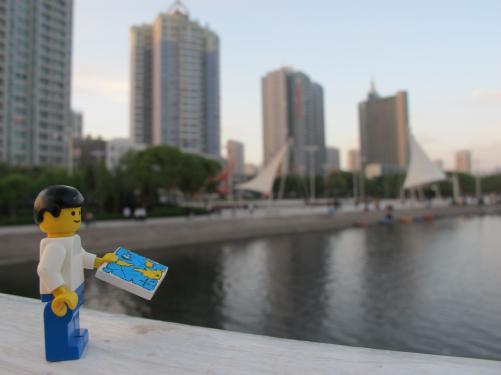
Finally arrived in Korla...
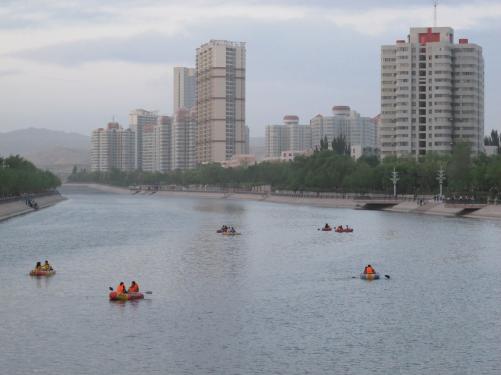
Boating on the river
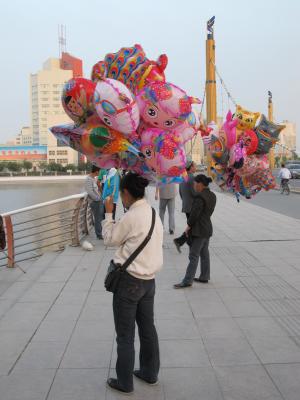
Balloons for everyone
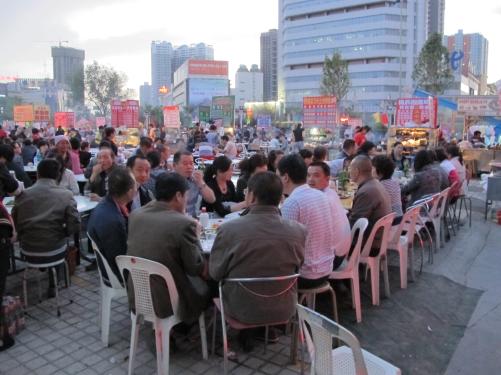
Night market full of food
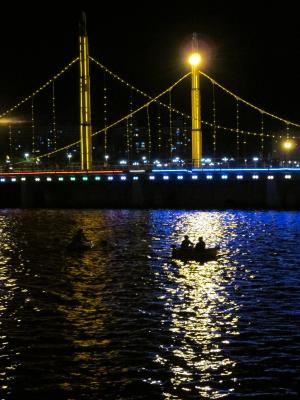
Korla at night...
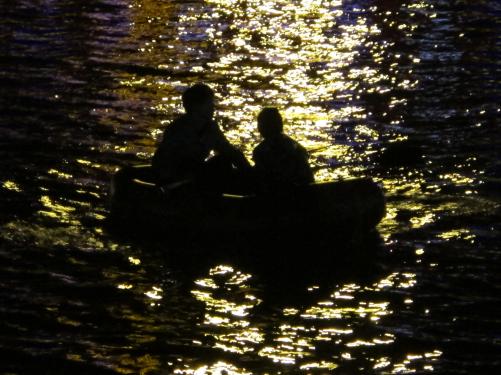
...sooo romantic ;)
After I checked-in the hotel named “Rose Hotel” we went for dinner. Some of you guys might not like me anymore when I tell you know what I ate – I ATE A CUTE TURTLE! Yes, I can’t deny it! And you know what...I even documented everything with my camera – me holding the shell of the turtle with my chopsticks! I AM AWFULLY SORRY! PLEASE FORGIVE ME! You want to know what it tasted like? Well, something like chicken…
After dinner I took a stroll through the city – a city much different than any other places I have seen in Xinjiang. Very green, clean and a beautiful river inviting the people for pleasant walks or romantic boat-trips for two.

Finally arrived in Korla...

Boating on the river

Balloons for everyone

Night market full of food

Korla at night...

...sooo romantic ;)
... ältere Einträge
